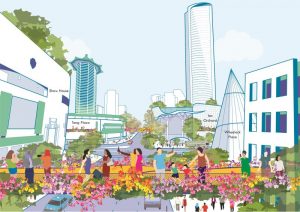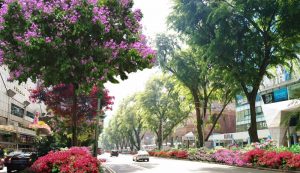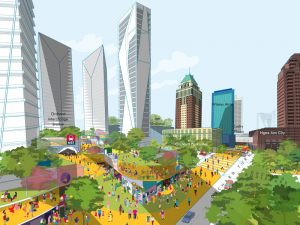“
In the end, place-making happens within each shop, each mall and in all the spaces in between, and it’s this sense of place that makes people want to come and spend time.
It helps that Causeway Bay and Fifth Avenue have a diversity of mixed-use buildings, with shopping integrated alongside offices, housing and other urban amenities. Neighbourhoods with multiple uses tend to be more vibrant, and that benefits shops. According to the study, Orchard Road had the highest proportion of retail than any other precinct they looked at.
The shopping malls themselves can also address issues of mixed use by diversifying their tenant mix with smaller independent retailers as well as entertainment venues, museums and exhibition spaces, libraries and other public services which would give people other reasons to visit besides shopping.
Shared spaces within malls also have the potential to create experiential journeys, as the study notes how retail developers and management can consider adopting the same approach that brands do to appeal to lifestyle choices of shoppers. It’s a sense of place-making, discovering each property’s individual strengths and positioning it to appeal to various audiences. From a structural point of view, malls can also seek to incorporate design features with the power to attract attention.
Cistri director Rahul Mittal highlights elements such as mezzanine level al fresco cafes or even unconventional escalator rides, things he says will not only pull people in, but up to floors that get less footfall.
“Overseas, both retailers and landlords are trying out new concepts to bring people back,” says Rahul. “It’s all related to the experience and journey.”
In the end, place-making happens within each shop, each mall and in all the spaces in between, and it’s this sense of place that makes people want to come and spend time.
“I think in the future, city pride will come from the fact that Orchard Road is not just about shopping,” says Jack. “It’s about something bigger than that, something that exudes our active and vibrant way of life.”
The above excerpts are from an article originally published by the Urban Redevelopment Authority, Skyline Issue 11: ‘Rejuvenating the Central Area.’ To read the full article, click here.



